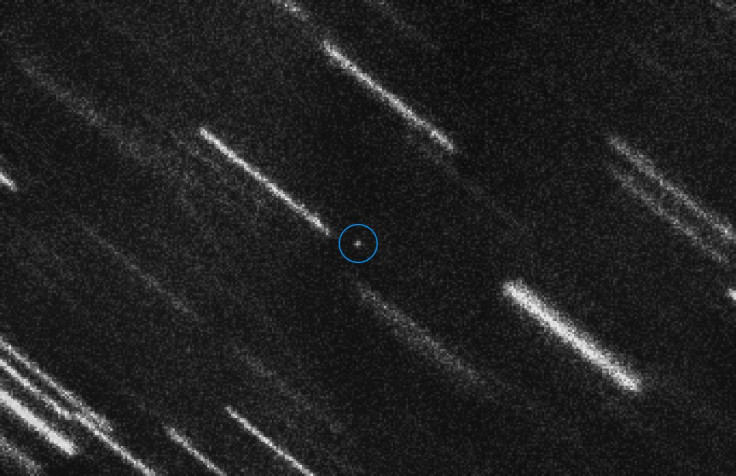NASA Planetary Defense Office Tracking Asteroid Headed For Earth Flyby

Last month a large asteroid missed a collision with Earth, now there's another headed for the planet.
The object labeled “Asteroid 2012 TC4” will pass Earth next week on Oct. 12. NASA announced the flyby in July before it was known exactly how close the asteroid would pass to Earth, although they knew then that it would at least pass a safe distance from the planet.
It was discovered in 2012 and hasn’t been seen since. When it passed then, it was a quarter of the distance between Earth and the moon. But the asteroid is estimated to be fairly small, about 30 feet to 100 feet in size. The reason it hasn’t been seen since its initial flyby is that it’s small, faint and has been too far away to detect from Earth.
Researchers who study the asteroid know the orbit of it well enough to know that it won’t come in contact with Earth. They’ve estimated that it will come within 27,000 miles of Earth, or one-eighth the distance between the Earth and moon. Previous estimates said it could come as close as 4,200 miles.
The reason this particular asteroid is so interesting isn’t only that it will be coming close to Earth, but that it also resembles the meteor that hit Russia in 2013. The meteor came into the Earth’s atmosphere near the Russian city of Chelyabinsk and injured more than 1,000 people there. The difference between an asteroid and a meteor is that asteroids are small rocks that orbit the sun in space, meteoroids can sometimes break off of these larger asteroids, when those pieces that break off enter Earth’s atmosphere, they become meteors.
The estimated calculations for the path that the asteroid will take are based on seven days of observations that were taken just after it was discovered in 2012. Researchers hope to gain more valuable observations with this approach to help them better predict the asteroid’s approaches in the future.
The asteroid will be used to test NASA’s network of observatories that work with the Planetary Defense Coordination Office which is meant to protect Earth in the case of a cosmic threat, like an asteroid. “This effort will exercise the entire system, to include the initial and follow-up observations, precise orbit determination, and international communications,” said Professor Vishnu Reddy with the University of Arizona’s Lunar and Planetary Laboratory, according to a press release.
This exercise will help NASA determine how prepared they are in the event that there is some sort of cosmic threat in the future that requires the coordination of the PDCO. The office also relies on observations made by the Centers for Near-Earth Object Observations Program.
The observatories will locate the asteroid as it makes its way toward Earth and then track it by and past the planet before making follow-up observations.
© Copyright IBTimes 2024. All rights reserved.





















